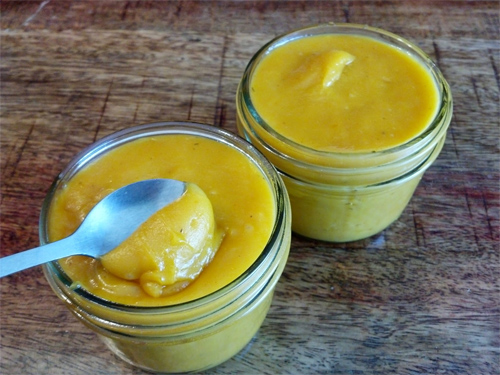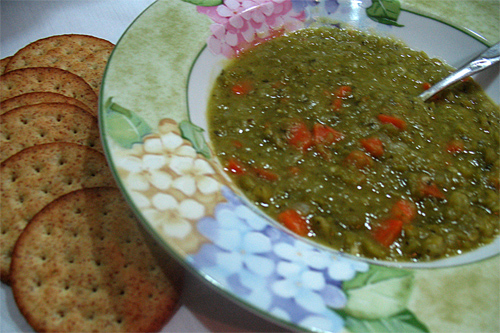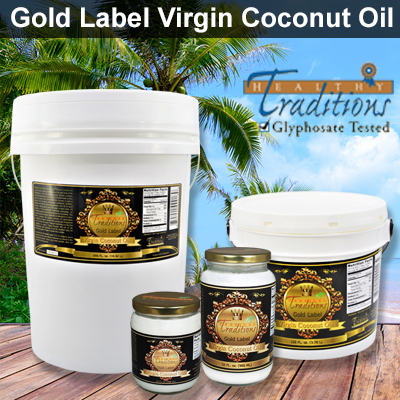Tips and Tricks on Getting that Coconut Flour Recipe Just Right
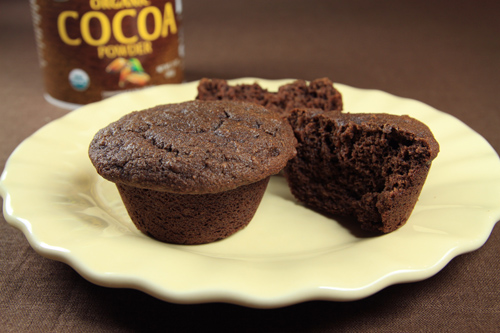
Coconut Flour Cocoa Banana Muffins
Coconut flour is the fiber from the coconut meat after almost all the oil has been extracted to make coconut oil. Being gluten free makes coconut flour a suitable wheat flour substitute for those with gluten and wheat allergies. It is also high in protein and fiber, containing more fiber than gluten-based grains.
Coconut flour is a very finicky product to work with. When adapting a recipe to coconut flour keep in mind that:
1/2 cup coconut flour needs 1-3 eggs.
1 cup wheat flour is the equivalent of 1/3 – 1/2 cup coconut flour.
Coconut flour requires about twice as much hydration as wheat.
1:1 wheat to coconut flour ratios will never work!
Sticky binders are a good thing.
Never pack the flour into your measuring device (and break up any clumps).
For recipes that use liquids, you’ll probably end up at least doubling the amount originally called for. To be safe though, start out with the original amount called for and add more as needed. Other ingredients that work well for hydration are products like sour cream and yogurt.
For flour ratios, start out with about a quarter of the amount of coconut flour for regular flour (playing it safe is key), making sure to use the proper amount of eggs and liquid for saturation. Don’t be afraid to mix your batters very well. Since there is no gluten there is no danger of the final product becoming too hard as a result of over mixing.
Besides eggs, other things to help with binding include sticky sweeteners like honey and maple syrup. Flax, chia, guar gum and xanthan gum can also be very helpful as they develop an egg-like consistency when mixed with liquid. 1 tablespoon of ground flax seeds soaked in 3 tablespoons of water can replace 1 egg, and just a little bit of the gums can add an extra binding element that mimics gluten, adding a stronger “bite texture” to baked goods.
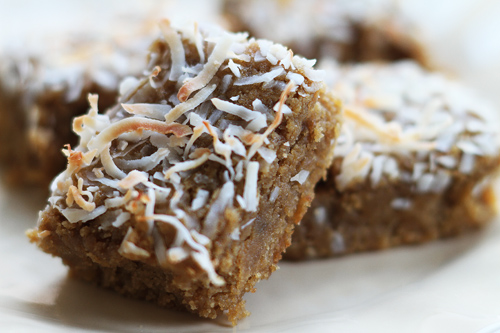
Gluten Free Toasted Coconut Ginger Blondies
Coconut flour can also be easily mixed with other flours. These Gluten Free Toasted Coconut Ginger Blondies use a blend of gluten free flours including coconut flour, and the Savory Cheese Scones use a bit of coconut flour for added coconut flavor and fiber. For wheat flour, you can substitute anywhere from 10 – 30% of regular flour for coconut flour. Gluten free flour mixes will vary greatly but always keep in mind how concentrated coconut flour acts.
A lot of recipes containing wheat flour can be converted to 100% coconut flour, but this will take time and practice. Coconut flour behaves differently from recipe to recipe, so a lot of tweaking and adjusting will have to be done. All my coconut flour recipes have been made with Tropical Traditions organic coconut flour; therefore I cannot assure you that they will work with different coconut flours, which might be higher in fiber and lower in protein content.
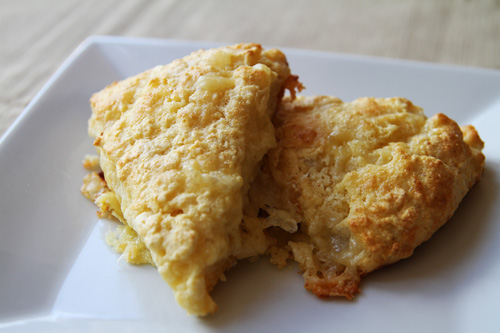
Savory Cheese Scones with Coconut Flour
Common problems:
Coconut flour made my batter/final product dry and crumbly! WHY?
You used too much flour and too little liquid. Always start out with a small amount of coconut flour – you’d be surprised at how greedy this product is and will expand when it comes into contact with liquids.
Coconut flour requires way too many eggs.
Not true. The issue here is that eggs are a great binder, mimicking what coconut flour lacks: gluten. However, the solution is simple if you want to reduce the amount of eggs: fewer eggs, more of a hydrating ingredient plus a sticky binder if needed (see suggestions above).
Coconut flour makes everything dense.
Not true either. Use the right amount of flour to liquid/wet ingredient ratio and you’ll be enjoying very light and fluffy coconut flour goodies. Take a bite of these Coconut Flour Cocoa Banana Muffins and you’ll be convinced.
Coconut flour can definitely be a very tricky product to work with, but with some time and the right ingredients the results will be well worth it!
By Sarah Shilhavy, photos by Jeremiah Shilhavy



